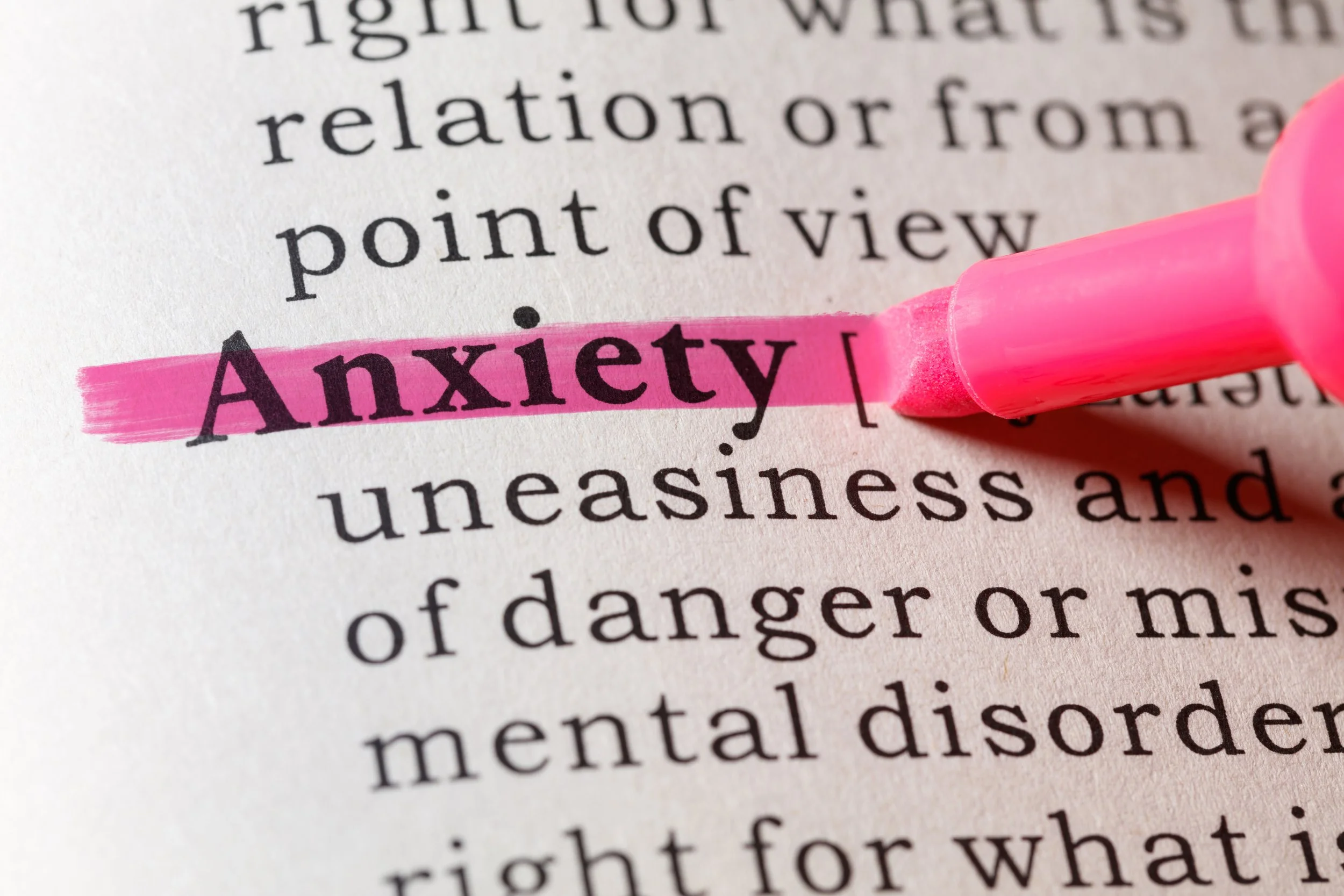
The Clock & The Calendar
These are not real names of clients. These are fictional characters rooted in source material from this author’s varied careers in his life before becoming a psychotherapist.
Patrick couldn't stay any longer. With crops to harvest and with matters busy at home, he no longer had time for the Roscoe Stetson Card & Hunt Club that operated outside of Roscoe's old family cabin. Patrick now had a wife and child. Patrick now had responsibilities. Texas Hold Em was now a Hold Up.
Author’s Note: These are not real names of clients. These are fictional characters rooted in source material from this author’s varied careers in his life before becoming a psychotherapist.
Patrick couldn't stay any longer. With crops to harvest and with matters busy at home, he no longer had time for the Roscoe Stetson Card & Hunt Club that operated outside of Roscoe's old family cabin. Patrick now had a wife and child. Patrick now had responsibilities. Texas Hold Em was now a Hold Up.
Jayne couldn't stand her anymore. She whined. The past years of high school cheer and the dance team were gone. She couldn't bear to hear what her old friend had to say. They were now night and day different. She needed to guard her time. People depended on her as the CFO for the farm. There was no more cheer. Her old friend that she was lifted high on the pyramid by no longer held her up.
Bert couldn’t stand it. His organic farming operation, his timeshare in Florida, and his new hybrid vehicle were all collecting greenbacks. The APR on his credit card to finance the hybrid and the timeshare was not an ally at this time. His back up against the wall. His grandfather, if he still were alive would have said the following to him. “Bertie, you can’t go down every road you see. Otherwise, your never gon to get anywhere.” Bert found himself scratching his head as he looked at his bank account app…wondering how he got here.
These are twenty-first century stories of how things change. Frequently we fail to see that when seasons change we must adapt to what we value not what we used to value. Both David, the Psalmist, and the 1960s rock group the Byrds understood this concept well. We come across points where we need to change how we view both the clock and the calendar differently and our dollars differently.
Our decisions reflect our values…what motivates us to success or failure tends to be guided by values. If compassion is a value you have, then compassion is likely to motivate you to go on a humanitarian journey or mission trip to a foreign country where a natural disaster has taken place to provide relief for the effected place and people. If you value family, maybe just being back to your house for dinner before 6pm is a priority. If you value quality, you’re going to be an intentional planner and worker. You’ll be following plans you made closely and you’ll have an ownership on everything you do. If you value faith, you’ll be spending time in prayer and connecting with the Word.
It all has logic, doesn’t it. If you value something, you’ll do it, you’ll chose it. However, in our world of 2025 we tend to get distracted by all sorts of things. Scrolling on our smartphones there’s an advertisement for everything. A distraction for every adult and child on demand. However, these distractions are just free dopamine: a neurotransmitter. Dopamine is a pleasure chemical we get when we engage in certain behaviors. Unfortunately, dopamine has an appeal that we misplace as a priority rather than what we value. Consider those three folks I mentioned at the start of this piece.
Jayne, Bert, and Patrick were all facing different priorities. The old priorities of their past though weren’t going to make it with what they valued currently. A friend of mine is 92 years old. He has written likely 1,000,000 words in his life in various journals, professional magazines, he is a medical doctor by training. He valued preserving and at times saving people’s lives. His life has been a joy filled one as he remained rooted in his values.
Jayne’s old friend, Patrick’s cardsharking, and Bert’s spending were not in alignment with their new values. A pal of mine once said it best: “Hobbies migrate and priorities change as we age.” The reality of this situation is that frequently we must audit what we prioritize to discover if the clock and the calendar are ruling us. If that is the case, we must change our priorities, re-actualize our values, so we manage the clock and the calendar for our best interest and the best interest of our families.
The Gottman Concept of 6 Magic Hours: How Six Hours a Week Can Transform Your Relationship
Renowned relationship researcher Dr. John Gottman discovered that the difference between couples who thrive and those who struggle isn’t grand gestures—it’s six intentional hours per week spent nurturing the relationship. This concept, often called the “6 Magic Hours,” is grounded in decades of empirical research on marital stability and the Sound Relationship House Theory.
Renowned relationship researcher Dr. John Gottman discovered that the difference between couples who thrive and those who struggle isn’t grand gestures—it’s six intentional hours per week spent nurturing the relationship. This concept, often called the “6 Magic Hours,” is grounded in decades of empirical research on marital stability and the Sound Relationship House Theory.
What Are the 6 Magic Hours?
Gottman’s research revealed that couples who improved their relationships after attending workshops weren’t making dramatic changes—they were simply devoting an extra six hours per week to connection. These hours are broken down into small, manageable rituals:
1. Partings (10 minutes/week)
Before saying goodbye in the morning, learn one thing about your partner’s day—such as a meeting or lunch plan. This builds emotional awareness and connection.
2. Reunions (1 hour 40 minutes/week)
End the day with a six-second kiss and a 20-minute stress-reducing conversation. This ritual helps partners transition from work stress to home life and fosters empathy.
3. Appreciation & Admiration (35 minutes/week)
Express gratitude daily. Gottman recommends an admiration journal to record positive traits and actions, which strengthens the “culture of appreciation” in the relationship.
4. Affection (35 minutes/week)
Non-sexual physical affection—like cuddling or holding hands—reinforces emotional and physical intimacy.
5. Weekly Date (2 hours/week)
Dedicate time for fun and novelty without distractions. This could be a walk, dinner, or tech-free evening.
6. State of the Union Meeting (1 hour/week)
This is a weekly one-hour check-in where couples calmly discuss their relationship in a structured, positive way. It starts with sharing appreciation, then moves to addressing concerns using “I” statements, problem-solving together, and planning for the week ahead. The goal is to prevent conflict buildup, strengthen emotional intimacy, and maintain open communication. Research shows that this ritual reduces stress and improves relationship satisfaction by creating a safe space for connection.
Why It Works: The Research Behind It
The Gottman Method is supported by over four decades of longitudinal studies on couples. Findings show that consistent micro-moments of connection—rather than occasional grand gestures—predict relationship satisfaction and resilience against stress. Outcome studies confirm that Gottman-based interventions improve intimacy, trust, and conflict management across diverse populations.
Practical Tips to Implement the 6 Magic Hours
Schedule these rituals into your calendar.
Start small—focus on partings and reunions first.
Use tech-free zones during these moments for full presence.
Reflect weekly on what worked and what needs adjustment.
The Gottman 6 Magic Hours offer a simple, research-backed way to strengthen your relationship without overwhelming your schedule. By dedicating just six intentional hours each week to meaningful rituals—like daily partings, reunions, appreciation, affection, a weekly date, and a State of the Union meeting—you can build trust, intimacy, and resilience. These small, consistent actions create lasting connection and help prevent conflict before it starts. Ready to transform your relationship? Start your 6 Magic Hours today and experience the difference.
Barriers to Mental Health Treatment for Autistic Clients: What Therapists Typically Get Wrong About Autism
Despite increasing awareness of autism spectrum disorder (ASD), significant barriers persist in mental health treatment for autistic clients. Many therapists lack adequate training and knowledge about autism, leading to misinterpretations and ineffective interventions. This post addresss recent research and clinical insights to highlight common pitfalls in therapy for autistic individuals and offers evidence-based recommendations for improvement.
Despite increasing awareness of autism spectrum disorder (ASD), significant barriers persist in mental health treatment for autistic clients. Many therapists lack adequate training and knowledge about autism, leading to misinterpretations and ineffective interventions. This post addresss recent research and clinical insights to highlight common pitfalls in therapy for autistic individuals and offers evidence-based recommendations for improvement.
Insufficient Training and Knowledge Among Therapists
Research consistently demonstrates that most mental health professionals receive minimal formal education on autism. For example, Lipinski et al. (2021) surveyed 498 psychotherapists in Germany and found that only 2% reported being highly knowledgeable about autism, while 53% had very little autism-specific psychotherapeutic training. Furthermore, 27% did not know where to seek support when working with autistic clients. Notably, education about ADHD was similarly lacking.
A Canadian study by Gallant et al. (2023) surveyed 577 community mental health clinicians and found that clinicians felt significantly less knowledgeable and confident supporting autistic clients compared to those with ADHD. While some treatment adaptations such as increased structure, predictability, shortened sessions, and the use of special interests were implemented, these often occurred without formal training. Other shortcomings included reduced confidence in listening to autistic concerns, issues with demonstrating empathy towards clients, difficulty in applying mental health knowledge, and struggles with effectively utilizing interventions.
Harmful Misinterpretations in Therapy
Therapists may inadvertently harm autistic clients by applying neurotypical frameworks to interpret autistic behaviors. Jones (2024) outlines several common misinterpretations:
Labeling needs for consistency or justice sensitivity as manipulative or narcissistic
Mischaracterizing meltdowns as tantrums
Interpreting alexithymia and executive functioning challenges as resistance or denial
Dismissing pattern recognition and anticipatory dread as magical thinking or OCD
Viewing sensory sensitivities as histrionic or emotionally stunted
Seeing shutdowns or overwhelm as refusal or sulking
Labeling stimming as anxiety
Attributing the realities of neurodivergence to victim mentality or self-pity
Misdiagnosing black-and-white thinking as borderline personality disorder
Calling sensitivity to internal bodily experiences hypochondria
Mistaking autistic burnout for chronic depression
Writing off irritability due to sensory hyposensitivities as a negative mindset or anger issues
Such misinterpretations can lead to inappropriate interventions and reinforce stigma.
Systemic Issues and the Impact of Masking
Therapeutic approaches that place responsibility solely on the client such as framing the autistic individual as the "problem" fail to address systemic barriers. This can result in autistic clients feeling responsible for others' emotions, which in turn, perpetuates overthinking and isolation. Minimizing or denying the reality of being autistic (e.g., "You're too smart/social/successful to be autistic" or "Everyone is a bit autistic") further invalidates clients' experiences.
Encouraging masking or "pushing through" behaviors can suppress regulatory behaviors like stimming and necessary self-care, leading to burnout, depression, and increased suicidality (Jones, 2024). Therapists must recognize the dangers of masking and support authentic self-expression.
Recommendations for Practice
To improve outcomes for autistic clients, therapists should:
Pursue specialized training in autism and neurodiversity
Adapt sessions for structure, predictability, and sensory needs
Use concrete language and capitalize on clients' strengths and interests
Involve family and support systems in therapy
Avoid neurotypical assumptions and validate autistic experiences
Recognize and address systemic barriers, not just individual challenges
Conclusion
Addressing barriers to mental health treatment for autistic clients requires systemic change in therapist education, clinical practice, and societal attitudes. By integrating research-based adaptations and fostering genuine understanding, therapists can provide more effective and empathetic care.
References
Gallant, C., Roudbarani, F., Ibrahim, A., et al. (2023). Clinician Knowledge, Confidence, and Treatment Practices in Their Provision of Psychotherapy to Autistic Youth and Youth with ADHD. Journal of Autism and Developmental Disorders, 53, 4214–4228. https://doi.org/10.1007/s10803-022-05722-9
Jones, S. (2024). The Autistic Survival Guide to Therapy. Jessica Kingsley Publishers
Lipinski, S., Boegl, K., Blanke, E. S., Suenkel, U., & Dziobek, I. (2021). A blind spot in mental healthcare? Psychotherapists lack education and expertise for the support of adults on the autism spectrum. Autism, 26(6), 1509-1521. https://doi.org/10.1177/13623613211057973
Honoring Our Grief & Loss
Grief is not about the absence of someone. Grief and sorrow are about all the moments that were and what could have been that gather like storm clouds - the endless possibilities. Grief is the waves that crash over us - unrelenting in the first moments - taking us under into the darkness with no direction. The waves can reduce their intensity and shape but can awaken at the most unexpected moments. These moments are often described as a dull ache, losing our breath, or falling suddenly.
The Waves
Grief is not about the absence of someone. Grief and sorrow are about all the moments that were and what could have been that gather like storm clouds - the endless possibilities. Grief is the waves that crash over us - unrelenting in the first moments - taking us under into the darkness with no direction. The waves can reduce their intensity and shape but can awaken at the most unexpected moments. These moments are often described as a dull ache, losing our breath, or falling suddenly.
Joan Didion stated in The Year of Magical Thinking, “[g]rief is different. Grief has no distance. Grief comes in waves, paroxysms, sudden apprehension that weaken the knees and blind the eyes and obliterate the dailiness of life. Virtually everyone who has ever experienced grief mentions this phenomenon of “waves.”
The Tangle that Is the Grief Journey
We were taught that our grief journey progresses with Elisabeth Kübler-Ross’s Five Stages of Grief: denial, anger, bargaining, depression, acceptance (The Five Stages of Mourning by Kubler Ross). Instead, we must consider that our grief journey cannot be found in a simple straight line from point A to point B - pain to peace - as much as we would want this. Grief comes with twists and turns that may feel like we take one step forward and 10 steps back - much like the image below. Grief is an essay, not a multiple choice answer, because the journey is deeply personal - only our own. We would not want it any other way.
Strength in our Words
Take a moment to pull apart the emotions that are enclosed in the waves because they could be more than sadness. It takes strength and courage to take our emotions out of the box to reflect and consider before placing them back in the box. Without this process, we could lose ourselves in the grief. A Chinese proverb states that “you cannot prevent the birds of sorrow from flying over your head, but you can prevent them from building nests in your hair.”
We want to prevent the “nest” in our hair by taking the first small step to hold our grief gently and carefully - speaking and sharing into existence in a safe space. Our words can become the buoy that can hold us together in the storm. Our tears can bear witness to our love and loss. In time, you can even recognize and anticipate the waves - our triggers - waiting around the bend. Our words matter. Our words are powerful. Our memories give us strength to hold the photographs, visit the cemetery, acknowledge the birthdays, wrap the holiday presents, and hug those present in our lives who also walk in a similar path because they also are navigating their own storm.
“You were merely wishing for the end of pain, the monster said. Your own pain. An end to how it isolated you. It is the most human wish of all.”
― Patrick Ness, A Monster Calls
You Are Not Alone
Grief isolates. The waves pull us out far into the sea where all sound is muffled except for the crashing of the waves. Light only shines sporadically. We are pulled under and panic to reach for something or someone to hold us up. Our thoughts in these moments are not truthful.
You do not have to navigate grief alone.
What can help?
Communication with family and friends
Quiet, safe spaces to breathe
Crying
Being present for the activities that bring us joy
Journaling
Asking questions for clarification of what happened
Building a network of support - at home, at work, at school
Consider speaking to a counselor
Be honest with yourself and others
Recognize all the other losses that occur with one loss (losing community due to moving, job loss, loss of friendship, etc)
Resources
Association for Death Education and Counseling - http://www.adec.org/adec/default.aspx
Center for Loss & Life Transition - https://www.centerforloss.com/
Helping Teens Work Through Grief, Second Edition - Mary Kelly Perschy
Teen Grief : Coping with the Loss of a Loved One – Hospice of the Valley - https://www.hov.org/media/1555/teengrief.pdf
The Dougy Center: The National Center for Grieving Children and Families - http://www.dougy.org/
Summit Family Therapy Wins Best Counseling Center in Peoria!
We are excited to announce that Summit Family Therapy, a leading provider of mental health counseling in Peoria, Illinois, has been honored with the Official 2025 Community Choice Award for Best Counseling Center! This recognition reflects our dedication to delivering compassionate, evidence-based therapy services for individuals, couples, and families.
We are excited to announce that Summit Family Therapy, a leading provider of mental health counseling in Peoria, Illinois, has been honored with the Official 2025 Community Choice Award for Best Counseling Center! This recognition reflects our dedication to delivering compassionate, evidence-based therapy services for individuals, couples, and families.
Why This Award Matters
Mental health is essential for overall well-being, and this award highlights the importance of accessible, high-quality care. At Summit Family Therapy, our mission is to create a safe, supportive environment where clients can heal, grow, and thrive. Whether you’re seeking anxiety counseling, family therapy, or relationship support, we are here to help.
Our Commitment to Peoria and Beyond
As a trusted Peoria counseling center, we believe in breaking the stigma around mental health and empowering our community. This award is a testament to the hard work of our dedicated therapists and the trust of our clients.
Thank You for Your Support
We couldn’t have achieved this without YOU—our clients, partners, and supporters. Your encouragement inspires us to keep raising the bar for mental health care.






Understanding Emotional Affairs: Dynamics, Risks, and Recovery
Emotional affairs are one of the most overlooked threats to relationship health. While they don’t involve physical intimacy, they can be just as damaging—sometimes even more so. In today’s digital world, where social media and constant connectivity blur boundaries, emotional infidelity is becoming increasingly common. If you’ve ever wondered what an emotional affair is, why it happens, and how to protect your relationship, this article will give you the answers. We’ll explore the psychology behind emotional affairs, their impact on trust and intimacy, and practical strategies for prevention and healing.
Emotional affairs are intimate, non-physical relationships that cross boundaries of trust within committed partnerships. While they lack sexual involvement, emotional affairs often involve secrecy, emotional intimacy, and a diversion of relational energy away from the primary relationship. In today’s digital age, constant connectivity blurs the lines between friendship and intimacy, making emotional affairs increasingly common. Unlike platonic friendships, these relationships typically involve a level of closeness that rivals or surpasses that of the committed partner, often accompanied by secrecy and idealization (Glass & Wright, 1992). This dynamic can erode trust and destabilize the foundation of a committed relationship, even without physical contact.
An emotional affair is characterized by emotional intimacy, secrecy, and boundary violations. Individuals share personal thoughts, feelings, and vulnerabilities that are usually reserved for their partner, while concealing the depth of the relationship. Emotional energy is redirected away from the primary relationship toward another person (Olson et al., 2012). Although sexual infidelity is often viewed as more severe, research indicates that emotional betrayal can be equally damaging to relationship satisfaction and trust (Whisman et al., 2007).
Several psychological factors contribute to emotional affairs. Unmet emotional needs within the primary relationship often lead individuals to seek validation elsewhere. Opportunity and accessibility through social media and workplace interactions create environments conducive to emotional closeness (Cravens et al., 2013). Idealization also plays a role, as individuals project ideal qualities onto the other person, creating a sense of escape from relational stressors. These dynamics can result in significant consequences, including erosion of trust, decreased intimacy, and heightened conflict when the affair is discovered (Glass, 2003).
Preventing emotional affairs requires proactive strategies. Couples should establish clear boundaries about what constitutes appropriate emotional sharing outside the relationship. Enhancing communication about emotional needs and expectations fosters transparency and reduces secrecy. If an emotional affair occurs, rebuilding trust through accountability and consistent behavior is essential. Professional support, such as couples therapy, can help address underlying issues and restore relational health (Gottman & Silver, 2015).
Emotional affairs challenge the integrity of committed relationships by diverting emotional intimacy and trust. Recognizing the signs, understanding the psychological dynamics, and implementing proactive strategies can help couples protect and strengthen their bond.
Are you concerned about how your relationships are impacting your primary relationship? Or are you worried your partner is having an emotional affair?
Emotional affairs can quietly erode trust and intimacy, leaving couples feeling disconnected and betrayed. The good news? Awareness and proactive communication can prevent these situations before they start. By setting clear boundaries, prioritizing emotional needs within your relationship, and seeking professional support when necessary, couples can strengthen their bond and protect their partnership. If you suspect an emotional affair or want to learn more about rebuilding trust, consider reaching out to a licensed therapist. At Summit Family Therapy, we specialize in helping individuals and couples navigate these challenges and create healthier, more fulfilling relationships.
The Challenges of Making Friends as an Adult: Barriers and Strategies for Connection
Friendship is a critical component of psychological well-being, yet adults often struggle to form new social bonds. This article examines the unique challenges adults face in building friendships, including structural, psychological, and cultural factors, and provides evidence-based strategies to foster meaningful connections. Recommendations are grounded in research on social psychology, mental health, and adult development.
Friendship is a critical component of psychological well-being, yet adults often struggle to form new social bonds. This article examines the unique challenges adults face in building friendships, including structural, psychological, and cultural factors, and provides evidence-based strategies to foster meaningful connections. Recommendations are grounded in research on social psychology, mental health, and adult development.
Friendship plays a vital role in emotional health, resilience, and life satisfaction (Demir & Davidson, 2013). While childhood and adolescence offer abundant opportunities for social interaction, adulthood introduces barriers such as time constraints, geographic mobility, and shifting priorities. Understanding these challenges and identifying practical strategies is essential for promoting social connectedness and reducing loneliness—a growing public health concern (Holt-Lunstad et al., 2015).
Challenges in Adult Friendship Formation
1. Time Constraints
Work, family, and caregiving responsibilities often leave adults with limited time for social engagement (Rawlins, 2017). Unlike school environments, adulthood lacks structured opportunities for spontaneous interaction.
2. Reduced Social Structures
Educational settings naturally facilitate friendships through shared experiences. In adulthood, these structures diminish, requiring intentional effort to meet new people (Hall, 2019).
3. Fear of Rejection and Vulnerability
Adults may experience heightened anxiety about initiating friendships due to fear of judgment or rejection, particularly in individualistic cultures that emphasize self-sufficiency (Nelson, 2013).
4. Geographic Mobility
Career changes and relocations disrupt established social networks, making it harder to maintain long-term friendships (Oswald & Clark, 2003).
5. Changing Priorities
Adults often prioritize quality over quantity in relationships, seeking deeper connections rather than casual acquaintances (Hall, 2012).
Strategies for Building Friendships
1. Leverage Existing Networks
Reconnecting with acquaintances or colleagues can serve as a foundation for deeper relationships. Research suggests that “weak ties” often lead to meaningful social opportunities (Granovetter, 1973).
2. Engage in Interest-Based Activities
Shared hobbies create natural contexts for interaction. Group activities such as book clubs or volunteer work foster repeated exposure, which is key to friendship development (Montoya et al., 2006).
3. Consistency and Effort
Friendship requires sustained interaction. Regular participation in social activities increases the likelihood of forming bonds (Hall, 2019).
4. Practice Vulnerability
Authenticity and self-disclosure are critical for intimacy in friendships (Reis & Shaver, 1988). Gradual sharing of personal experiences builds trust. Brené Brown has an excellent video (see below) that explains her marble jar theory of how trust is built over time, through small moments and consistency.
5. Utilize Technology
Social media and apps can facilitate initial connections, but transitioning to in-person interaction strengthens relational depth (Chan, 2011).
6. Manage Expectations
Not every interaction will result in a close friendship. Viewing social engagement as a process reduces pressure and promotes enjoyment (Nelson, 2013).
Conclusion
Making friends as an adult is challenging but achievable through intentionality, vulnerability, and consistent effort. Strong social connections enhance mental health, reduce loneliness, and improve overall well-being. By understanding barriers and applying evidence-based strategies, adults can cultivate meaningful relationships that enrich their lives.
References
Chan, D. K. (2011). Social networking sites and personal relationships: Online intimacy and offline distance. Cyberpsychology, Behavior, and Social Networking, 14(5), 253–257.
Demir, M., & Davidson, I. (2013). Toward a better understanding of the relationship between friendship and happiness: Perceived responses to capitalization attempts. Journal of Happiness Studies, 14(2), 525–550.
Granovetter, M. S. (1973). The strength of weak ties. American Journal of Sociology, 78(6), 1360–1380.
Hall, J. A. (2012). Friendship standards: The dimensions of ideal expectations. Journal of Social and Personal Relationships, 29(7), 884–907.
Hall, J. A. (2019). How many hours does it take to make a friend? Journal of Social and Personal Relationships, 36(4), 1278–1296.
Holt-Lunstad, J., Smith, T. B., Baker, M., Harris, T., & Stephenson, D. (2015). Loneliness and social isolation as risk factors for mortality: A meta-analytic review. Perspectives on Psychological Science, 10(2), 227–237.
Nelson, L. J. (2013). Emerging adulthood and college students’ identity development. Journal of College Student Development, 54(5), 556–570.
Oswald, D. L., & Clark, E. M. (2003). Best friends forever? High school best friendships and the transition to college. Personal Relationships, 10(2), 187–196.
Rawlins, W. K. (2017). Friendship matters: Communication, dialectics, and the life course. Transaction Publishers.
Reis, H. T., & Shaver, P. (1988). Intimacy as an interpersonal process. In S. Duck (Ed.), Handbook of personal relationships (pp. 367–389). Wiley.
KPOP Demon Hunters: Masking, People-Pleasing, and Internalized Shame
The three main characters in KPOP Demon Hunters resonate with so many people because they mirror the real life experience of internalized shame and wanting to be accepted for who you really are. They further speak to neurodivergent struggles of masking and people-pleasing.
Image attribution source: https://news.uchicago.edu/story/souls-fandom-and-kpop-demon-hunters
The three main characters in KPOP Demon Hunters resonate with so many people because they mirror the real life experience of internalized shame and wanting to be accepted for who you really are. They further speak to neurodivergent struggles of masking and people-pleasing.
Zoey masks primarily through people-pleasing and a sense of wanting to fit in after spending a childhood of trying to play both sides but being unable to find her own place. She talks about feeling like her thoughts, lyrics, and notebooks were useless and weird before she joined Huntr/x.
Mira masks through a facade of not caring after a childhood where she was labeled “a problem child” who “got too wild.” There is other messaging that implies possible complex trauma from this childhood. Mira embraces this tough facade by outwardly challenging social norms by doing things like showing up to the Met Gala wearing a sleeping bag. Yet deep down she is seeking family and connection more than anything else.
Rumi struggles most with internalized shame and must cover up her true self (masking) due to her patterns from being half-demon. She fears that no one will love her or truly accept her due to seeing herself as a mistake, which was greatly exacerbated by the childhood trauma of Celine repeatedly telling her to cover up her patterns and to not let her faults or fears ever be seen.
The song Golden speaks to their struggles with masking and wanting to be who they were born to be. Rumi sings about wanting to break down the walls that she has used to keep people at a distance and feel like herself. Ultimately, the song Golden speaks to Rumi still falling into the trap of masking due to her wanting to put her patterns in the past and just live like this image that other people see of her. The reality is the patterns are not going anywhere. No amount of trying to be “normal enough” is ever going to change that. So many neurodivergent people have dealt with the similar struggle of trying to appear normal enough only to realize that no matter how hard they mask, “the patterns” will still appear. The harder Rumi pushes herself the more the patterns show up until she hits a breaking point. This is the cycle of masking and pushing too hard for too long and then ending up in burnout that ADHD, Autistic, and other neurodivergent people will struggle with at multiple points in their lives.
Zoey struggles with people-pleasing, a very common neurodivergent masking strategy. She is the placater of the group as she is highly empathetic and does not want to see anyone hurting.
This leads to increasing overwhelm for her when Mira is picking up on Rumi hiding something from them. Zoey wants them to be happy and getting along and blames herself. She falls into the common trap of just trying harder. She tries to fix things by changing her lyrics for the song “Takedown” over and over again, but this only leads to a growing sense that her efforts and therefore her as well are “not enough.” Rumi in turn gets increasingly defensive due to her shame and Mira’s questioning, and she lashes out at Mira. The conflict comes to a head when the demons expose Rumi’s demon patterns on stage. Rumi feels intense overwhelming shame and then has to face being exposed as her true self in front of Mira and Zoey. Due to the shame and overwhelm she does not hear that Mira’s and Zoey’s hurt is due to Rumi not letting them in and lying to them. Instead it is confirmation that she is a mistake. She gets increasingly defensive and panics. This escalates to despair and hopelessness when Mira and Zoey point their weapons at her. Rumi makes one more attempt to seek love and acceptance by talking to Celine only to realize that Celine also does not accept her for who she truly is and cannot love all of her.
Rumi is faced with the situation that so many neurodivergent people fear most of all: once we are exposed as our true selves we will be seen as unloveable. This is the core struggle underlying rejection sensitive dysphoria. Mira and Zoey then face this same core fear when the demon king Gwi-Ma speaks to each of them. For Mira, the shame message is that she does not deserve a family and never has deserved a family. For Zoey the shame message is the painfully familiar one that so many ADHD and Autistic people have internalized “You’re too much. And not enough. You’ll never belong anywhere,” Gwi-Ma then lures her in with a promise of a place to belong. Gwi-Ma also challenges Rumi with more shame messages, “You think you can fix the world? You can’t even fix yourself,” when she shows up to try to stop him.
At this point Rumi has realized the heavy lesson that covering up who she is not the answer. The core wound or conflict for Rumi, Zoey, and Mira is starting to heal through the song,”What it Sounds Like.” Rumi sings first to Mira and Zoey taking accountability for her lies, for hiding who she is, and not letting the people she loves most in. Rumi goes on to sing about how she now sees the beauty in what she previously thought was just her being broken. Her struggles and her patterns also make her who she is. Zoey joins in the song singing “Why did I cover up the colors stuck inside my head?” which is her starting to accept herself for what makes her unique rather than seeing it as weird or useless. Mira joins in singing “I should’ve let the jagged edges meet the light instead” speaking to her wanting to drop the facade. They all sing together about not staying stuck in the shame of having “listened to the demons, we let them get between us” and realizing that they are only able to beat back the demons (both literal and metaphorical) by being and embracing their real and vulnerable selves.
Understanding Anxiety: A Survival Signal, Not a Flaw
Anxiety is universal. Even those who seem cool, calm, and collected experience it. And for good reason — anxiety is necessary for our survival. That’s right: anxiety is necessary.
Is it pleasant? No.
Fun? Not really.
Embarrassing? Sometimes.
But it’s also unavoidable, necessary, and even useful.
The goal isn’t to eliminate anxiety. It’s to understand it, tolerate it, and even use it to our advantage when it shows up.
Anxiety is universal. Even those who seem cool, calm, and collected experience it. And for good reason — anxiety is necessary for our survival. That’s right: anxiety is necessary.
Is it pleasant? No.
Fun? Not really.
Embarrassing? Sometimes.
But it’s also unavoidable, necessary, and even useful.
The goal isn’t to eliminate anxiety. It’s to understand it, tolerate it, and even use it to our advantage when it shows up.
What Exactly Is Anxiety?
Anxiety is our body’s built-in alarm system. It’s the tingle in our toes, the butterflies in our stomach, the sweating, the quickened breath. These physical reactions are our body’s way of saying:
“Hey, pay attention! Something’s going on here.”
Think about our ancient ancestors. Anxiety helped them survive in dangerous, unpredictable environments. Imagine hunting for food — you had to stay alert and aware of every sound and movement. That tingle on the back of your neck could mean the difference between life and death. The racing heart, the adrenaline rush — all of it prepared the body to fight, flee, or freeze.
Thankfully, most of us aren’t dodging predators these days. But our modern “threats” — social situations, deadlines, tests, uncertainty about the future — trigger the same biological response.
Anxiety isn’t a character flaw or personal weakness; it’s biology. We are literally wired to survive. So if you’re one of the “lucky” ones who feels anxiety strongly, give your body a high-five — it’s just doing its job.
When Anxiety Overreacts
Sometimes, though, anxiety misfires. It warns us of danger when there isn’t any. It convinces us to avoid things we actually want to do. It makes us feel stuck, small, or alone.
But here’s the key: anxiety is a messenger, not the enemy.
Once we understand that, we can start building tolerance.
Breaking the Cycle of Avoidance
When we feel anxious or uncomfortable, our instinct is to avoid whatever’s causing it. Avoidance gives us temporary relief — we feel better for a moment, so our brain learns, “Ah, that worked!”
Unfortunately, this reinforces the idea that the situation was dangerous. The next time we face something similar, the anxiety hits even harder. This creates a cycle of anxiety → avoidance → more anxiety.
To break that cycle, we have to do something counterintuitive:
Face the discomfort — on purpose.
Building Tolerance Through Practice
One of the most effective ways to manage anxiety is to increase our tolerance by gradually placing ourselves in anxiety-provoking situations.
Yes, it’s uncomfortable — but that’s the point. Growth always feels that way at first. When the anxiety rises, remind yourself:
“I can handle this. This isn’t actually dangerous.”
Try small “comfort zone challenges” to build that muscle:
Start a conversation with a stranger.
Try a new hobby that feels intimidating.
Attend an event alone.
Share your opinion.
Take a cold shower.
Wear something you wouldn’t normally wear.
As you do, notice what happens in your body — where you feel the tension, what thoughts arise. Then, a few minutes later, notice how the intensity starts to fade.
You’re surviving the moment — and that’s how tolerance grows.
The Bottom Line
Anxiety isn’t a flaw to fix — it’s a signal to understand. When we learn to listen to it, tolerate it, and move through it, we reclaim our power.
Anxiety may never disappear entirely, but it doesn’t have to control your life. You can coexist with it — and even thrive because of it.
Would you like some more support to guide you through your recovery? Reach out to our office today and make an appointment.
Can You Fix Your Family?
I have noticed a significant reoccurring pattern in several of my client’s stories these past few weeks and thought it might be helpful to share my thoughts on this with others.
There are some amazing families out there who are loving, securely attached, have healthy boundaries, and fulfill individual emotional needs in balanced ways.
The short answer is no. You cannot fix your family.
I have noticed a significant reoccurring pattern in several of my client’s stories these past few weeks and thought it might be helpful to share my thoughts on this with others.
There are some amazing families out there who are loving, securely attached, have healthy boundaries, and fulfill individual emotional needs in balanced ways. They handle big feelings and give grace for the human imperfections that are in even the best of us. They address conflicts and repair hurts in relationships. Yet, many of the adult clients who end up in my office do not come from such a family. Often, a big part of their recovery is identifying patterns they learned from their family of origin, such as attachment styles, communication, and handling conflict.
I love this quote from Brené Brown, Rising Strong, about an exercise that she does with people:
“Folks write down the name of someone who fills them with frustration, disappointment, and/or resentment, and then I propose that their person is doing the best he or she can. The responses have been wide-ranging...One woman said, 'If this was true and my mother was doing the best she can, I would be grief-stricken. I'd rather be angry than sad, so it's easier to believe she's letting me down on purpose than grieve the fact that my mother is never going to be who I need her to be.'"
The bad news is that you cannot heal the dysfunction in the family you grew up in. If that was hard to read, read it again. It is not your role to save your parents/caregivers now, nor should it ever have been your job growing up. Let that responsibility go. It is keeping you stuck, sick, and sad. Maybe they will change and maybe they won’t. It is not up to you and it never was.
There is a very real grief process that comes along with the acceptance of that reality. All of us have expectations and dreams about what we hope life looks like, and this includes our family relationships. To lead healthy and wholehearted lives, we must make peace with the very real limits of others.
The good news is that you can change your own life.
You can grow.
You can parent differently and stop those generational patterns.
You can accept yourself as worthy of love and belonging.
You can freely give empathy because of the struggles you endured.
You are not doomed to repeat the past.
You can learn new ways to communicate.
You can set boundaries.
You can take the good parts of your family and limit the parts that are harmful.
You can make a new family.
You can cultivate authentic relationships based on love, emotional/physical safety, deep connection, grace, compassion, courage, joy, and showing up for each other. Not sure where to start? Give our office a call at 309-713-1485.
Nutritional and Integrative Interventions
How often do we read these mental health statistics and think that the only “cures” are pharmaceutical interventions?
Anxiety disorders are most common mental illness in US affecting 40 million adults (ADAA)
Depression affects 322 million adults worldwide
1 of every 6 adults will suffer depression in their lifetime
Nutritional and Integrative Interventions
(Depression, Anxiety, Bipolar and ADHD)
How often do we read these mental health statistics and think that the only “cures” are pharmaceutical interventions?
Anxiety disorders are most common mental illness in US affecting 40 million adults (ADAA)
Depression affects 322 million adults worldwide
1 of every 6 adults will suffer depression in their lifetime
Nutritional psychology is an emerging field that outlines how nutrients can affect mood and behavior. Many clients will see a reduction in symptoms when integrating non-pharmaceutical interventions to treat depression, anxiety, bipolar disorder and even ADHD.
It is possible to accelerate your therapeutic results by viewing the whole person:
Food: the good, the bad and the fake
Stress: A holistic approach
Exercise: Elevate serotonin and regulate stress hormones
Sleep: The 4 habits critical to sleep
Research shows that Mediterranean lifestyle--diet, physical activity, and socializing helps improve mental health/depression.
Sugar addiction--sugar as a substance releases opioids and dopamine which suggest an addictive potential
Fake nutrition--alcohol, junk food, snacks, sugar, soft drinks, white foods
Stress management--meditation, exercise, deep breathing, mindfulness, music, “ditch the screens”
Exercise--pick activity you enjoy, find a buddy, set a goal, start out slow
4 Sleep habits--adults need 7-9 hours of sleep in a dark, cool room. No caffeine after noon. Avoid electronic devices one hour before bedtime. Create a bedtime ritual.
“Let food be your medicine and medicine be your food.”---Hippocrates
S.A.D.--Standard American Diet is not recommended
High--Meat at center of plate, processed foods and simple carbohydrates
Low--healthy fats, fruits and vegetables
Healthy fats are important for brain health--avocado, coconut oil, EVOO, ghee
Proteins are important for brain health--fish, grass fed beef, eggs, nuts, seeds legumes
You can greatly increase your therapeutic results by addressing core physical and nutritional needs with a qualified counselor. You will discover the nutrients most essential to healthy brain function, treating depression and anxiety, and learn simple strategies that can be integrated with pharmaceutical interventions.
We have just scratched the surface here. There is so much more research and information about nutrition and mental health available. Professional counselors want to help you decipher and incorporate these practices into your life.
If you are interested in taking the next step in your mental and physical health, I have training in nutritional and integrative interventions. Give our office a call at 309-713-1485 or email info@summitfamily.net. I look forward to finding solution together!
Ambiguous Loss: What Is It?
Dr. Pauline Boss, PhD, from University of Minnesota, has spent most of her career studying and writing books about ambiguous loss. Have you considered how your life be impacted by an ambiguous loss? The following article is a brief summary of her findings.
Ambiguous Loss: What Is It?
Dr. Pauline Boss, PhD, from University of Minnesota, has spent most of her career studying and writing books about ambiguous loss. Have you considered how your life be impacted by an ambiguous loss? The following article is a brief summary of her findings:
What is an Ambiguous Loss?
Loss that remains unclear
Ongoing and without clear ending
Can’t be clarified, cured, or fixed
Ambiguous loss can be physical or psychological, but there is incongruence between absence/presence
Contextual: The pathology lies in a context or environment of ambiguity (pandemic, racism)
Two Types of Ambiguous Loss
Physical Absence with Psychological Presence--Leaving without saying goodbye
Catastrophic: disappeared, kidnapped, MIA
More common: leaving home, divorce, adoption, deployment, immigration
Psychological Absence with Physical Presence--Goodbye without leaving
Catastrophic: Alzeimer’s disease and of dementias, brain injury, autism, addiction
More Common: homesickness, affairs, work, phone obsessions/gaming, preoccupation with absent loved one
What Ambiguous Loss is NOT:
Death
Grief disorder
PTSD
Complicated grief
Ambivalence (different that ambiguous)
Examples of Ambiguous Loss Caused by Pandemic--loss of who we have been, what we have been doing, having control over lives, loss of our world view as safe place.
Our usual agency
Control over our usual personal, family, and work life
Our in person relationships
Our job; loss of money and financial security
Our sense of safety
The ability to control how much time we spend with family and friends
Ability to gather physically together in large numbers for worship, sports, concerts
Are you struggling with ambiguous loss? Our team of professionals at Summit Family Therapy can help. Give our office a call at 309-713-1485 or email info@summitfamily.net. You do not have to go through this alone.


















